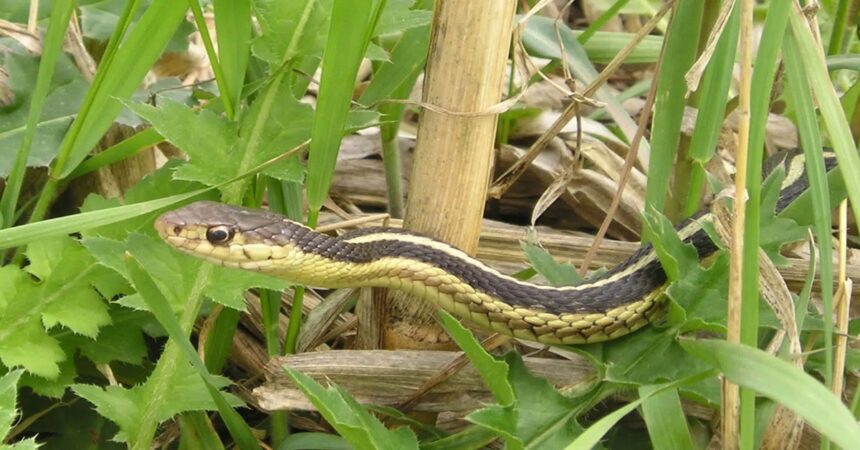Introduction
Garden snakes are often misunderstood creatures, but they play a vital role in maintaining the balance of nature. If you’ve ever wondered about these slithery visitors in your backyard, you’re in the right place. This comprehensive guide will explore what garden snakes are, their habits, benefits, and how to create a safe environment for both you and these reptiles.
What Is a Garden Snake?
The term “garden snake” often refers to garter snakes, small non-venomous snakes commonly found in gardens and yards. Recognized for their thin bodies and striped patterns, snakes are harmless to humans and serve as natural pest controllers.
Key Features of Garden Snakes:
Size: Typically 18–26 inches long
Color: Varied hues, often brown, green, or black with yellow or white stripes
Habitat: Grasslands, gardens, and wooded areas
Diet: Worms, insects, small amphibians, and rodents

Why Are Garden Snakes Beneficial?
snakes are often considered a gardener’s best friend. Here’s why:
- Natural Pest Control:
Garden snakes feed on common garden pests like slugs, crickets, and rodents, reducing the need for chemical pesticides. - Ecological Balance:
These snakes play an essential role in the food chain, keeping populations of various pests in check. - Harmless to Humans:
Despite their intimidating appearance, snakes are non-venomous and pose no threat to people or pets when left undisturbed.
Common Myths About Snakes
Many misconceptions surround snakes, leading to unnecessary fear. Let’s debunk some myths:
Myth: All snakes are venomous.
Truth: snakes are non-venomous and rarely bite unless provoked.
Myth: Snakes in the garden are a bad omen.
Truth: Seeing a snake is a sign of a healthy ecosystem.
Myth: snakes damage plants.
Truth: These snakes feed on pests, not plants, making them beneficial for gardens.
How to Identify Garden Snakes in Your Yard
Recognizing it is simple if you know what to look for:
Behavior: snakes are shy and will quickly slither away when approached.
Appearance: Look for slender bodies with distinct longitudinal stripes.
Location: They are often found under rocks, logs, or in tall grass.

How to Coexist with Garden Snakes
These are easy to live alongside when you follow these tips:
- Provide Shelter:
Create a welcoming habitat with rocks, mulch, and tall grass where garden snakes can hide. - Avoid Using Chemicals:
Pesticides and fertilizers can harm these reptiles. Opt for organic gardening methods. - Respect Their Space:
These are not aggressive. Give them space, and they’ll help keep your garden pest-free. - Educate Others:
Share knowledge about the benefits of it’s to dispel fear and promote coexistence.
What to Do If You See a Garden Snake
Spotting a it’s in your yard can be surprising, but there’s no need to panic. Follow these steps:
Stay calm and observe the snake from a distance.
Do not attempt to handle or provoke it.
If the snake is in an undesirable spot, gently encourage it to move using a broom.
If you’re unsure about the species, contact a local wildlife expert for advice.

FAQ
Q1: Are snakes dangerous?
No, these are non-venomous and harmless to humans when left undisturbed.
Q2: What do snakes eat?
It’s primarily eat insects, worms, small amphibians, and rodents, making them natural pest controllers.
Q3: How can I attract snakes to my yard?
You can attract snakes by providing shelter like rocks and mulch, maintaining a pesticide-free garden, and ensuring a steady food supply of insects and small animals.
Q4: Do snakes hibernate?
Yes, it’s hibernate during the winter months in burrows or other sheltered spots.
Q5: How can I keep these out of my home?
Seal cracks and openings around your home, and keep your yard tidy to prevent snakes from venturing indoors.
Conclusion
These may not be everyone’s favorite backyard guest, but they are invaluable allies in maintaining a healthy and thriving garden. By understanding their habits and benefits, you can coexist peacefully with these helpful reptiles. Embrace the presence of garden snakes, and enjoy a pest-free, eco-friendly yard.






